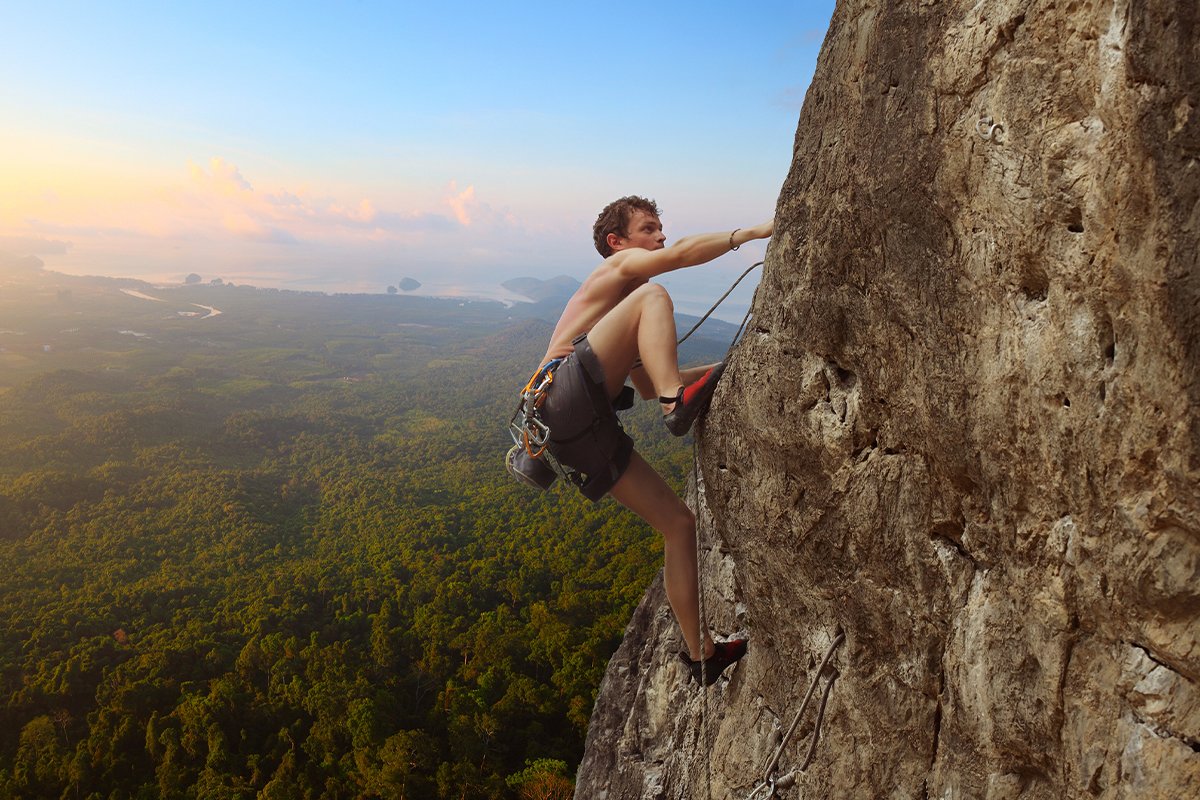
The van let the group of veterans from Heroic Hearts Project out at the bottom of a two-lane country road. It was too steep for the vehicle to go any farther. As they hiked deeper into the Peruvian jungle, flocks of chickens ran around their feet.
Only a 15-minute drive outside of the city of Tarapoto, Logan Stark found himself in a clearing. The former U.S. Marine Corps scout sniper observed small meditation huts near beautiful creeks augmenting a maloca hut — an octagonal cedar wood building with high ceilings that came to a point at the top. The maloca hut was where Stark and the other veterans, many of whom were combat veterans from the special operations community, would spend four of the next six evenings imbibing an ancient Amazonian brew of ayahuasca. A doctor who was studying the effects of psychedelics on post-traumatic stress disorder would be observing.
Going on an ayahuasca trip in the jungles of Peru is one of the more extreme examples of what some veterans are doing to reconnect with nature — and themselves — as a form of therapy. But the movement to get outside, get active, and to come together has been growing in recent years. It’s a path many see as a healthy alternative to prescription opioids and alcohol.

The next night at 6 o’clock, the group entered the maloca hut. Their shaman, an ex-phone psychic from the United Kingdom named Chris, began to sing ceremonial songs, some with lyrics Stark could understand and some he could not. Stark had established his intention (what he wanted to accomplish during this session) before the ceremony began, and as each participant stepped forward to take the plant medicine, he tried to settle into a meditative state.
Once he had taken the ayahuasca, Stark returned to his seat and waited. It didn’t take long. He was about to reconnect to the Earth in a profound way — but was this the answer to the pain he had suppressed for so long?
In the years since the start of the Global War on Terror, more and more veteran service organizations (VSOs) attempt to get veterans outdoors and interacting with nature.
Licensed professional counselor Annette Hill, clinical director for the VSO Warrior’s Heart, described these programs as extremely valuable. “Joyful activities with each other, high-octane or even risky activities, calming activities, bonding activities — they reestablish the sense of purpose, the connection to your physical body, the sense of accomplishment, the brotherhood, the validation, just getting outside of your house and doing something,” she said.
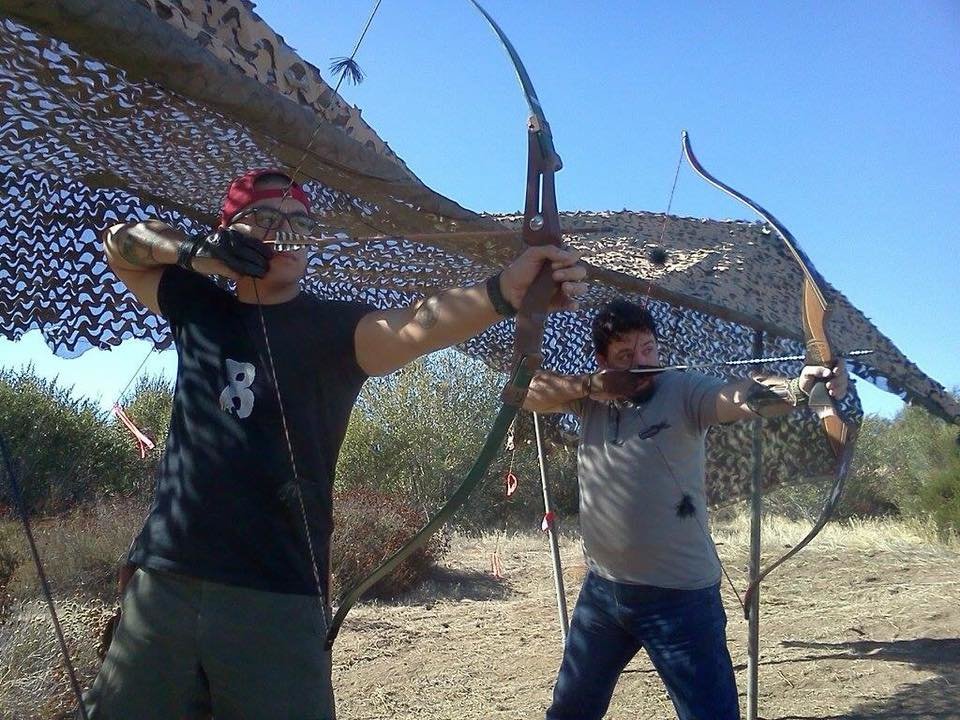
Brady Pesola wasn’t thinking about his fellow veterans when he started a survival school in San Diego eight years ago. “I was just taking people outdoors,” Pesola said, “teaching them stuff that I knew from growing up in the woods of Minnesota: the hunting and hiking and fishing and stuff like that.”
The former U.S. Marine had heard stories of people in the area getting lost, injured, and needing to be rescued — all while being only a mile or so from where they started.
“In San Diego, people really don’t know that we’re still in the desert,” said Pesola. “People don’t take it seriously. They’re just like, ‘Let’s go hiking with our Starbucks and our yoga pants’ and hike up a hill. They get dehydrated. People don’t apply a lot of common sense. And then it costs like $40,000 for a helicopter to come pick them up and rescue them.”
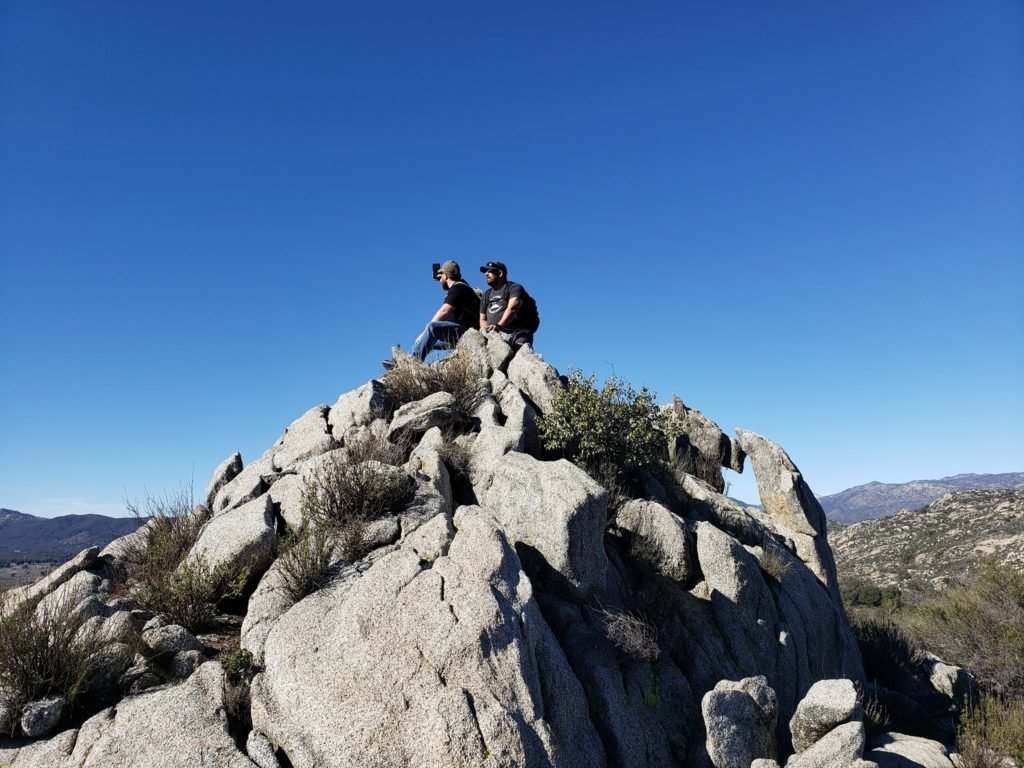
Pesola started hiring other veterans to help with his survival classes, and everyone involved found their time outside therapeutic. “Man, this is nice,” Pesola remembered thinking. “I’m sitting here eating a PB&J on a rock in the trees watching some civilian get lost doing land-nav. This is where I find my peace, out in the woods.”
So he started Triple B Adventures, a nonprofit organization that enables veterans to gather for “hunting, hiking, camping, fishing, man!” as Pesola described it, laughing. His motivation was simple: “I just wanted to hang out with a bunch of veterans around a campfire and shoot the shit.”
“Mostly we just do camping, but this year we put on a pheasant hunt. We got 80 birds,” he said. The hunt was sponsored by the National Rifle Association and Safari Club International. “They donated four shotguns and a clay thrower. We had 20 veterans come out, and all the veterans walked away with four pheasants each. We camped out the night before and went hunting the next day.”
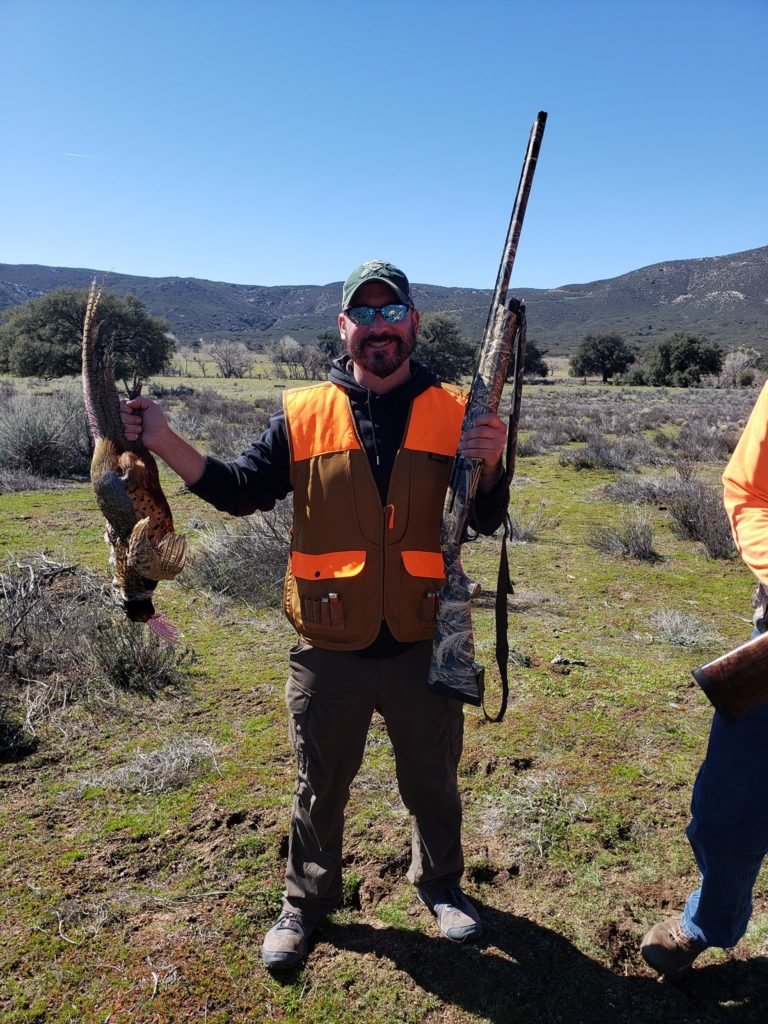
Triple B has grown tremendously through sponsorships and small fundraisers. “We’re trying to get to the point where you say, ‘I want to go camping,’ and you don’t need anything,” Pesola said. “So even if you don’t have the money to get gear, you don’t have the ability, now we’re able to pick you up and bring you out there. We’re almost to the point where you can come out with just the clothes on your back and [we’ll] have everything you need.”
Programs like Pesola’s combine the peaceful and engaging effect of being outdoors with a return to a feeling of belonging. “It’s that support network of other veterans,” said Mike Patterson, board member for Spokane-based Veterans Community Response (VCR). “I think a lot of vets lose that tribal feeling and that close camaraderie of their unit when they leave the service.”
VCR combines a spiritual approach to their retreats with a goal of setting veterans on a path to a new purpose. Their retreats involve traditional Native American sweat lodges; at the same time, they help veterans get their hands dirty with disaster relief and fuel-reduction projects.

Spokane firefighter Darrin Coldiron didn’t start VCR with a vision of what it would eventually become. It was originally founded as Community Focused Disaster Response when Coldiron traveled to Sri Lanka in response to the 2005 tsunami. Upon his return home, he was asked to throw a community event and concert for combat vets. “The money from that was in my account, but it was slated for work with vets,” said Coldiron. “I was going to go to the vet center and write a check.”
But while discussing with the head of the local vet center how that money could be best used, “I realized there was a need that I had the capacity to answer by putting on these multi-day retreats. That was something I was capable of handling.”
Roger Vielle, a member of the Blackfoot Tribe and VCR board member, runs the sweat lodge ceremonies that veterans engage in during their retreats. “Before our warriors would go off to battle,” explained Vielle, “there would be a cleansing ceremony for them where they would fast. Then they would go into this lodge and they would prepare themselves for this. Spirits that may be on them or with them that are not good, they would go into this lodge.”
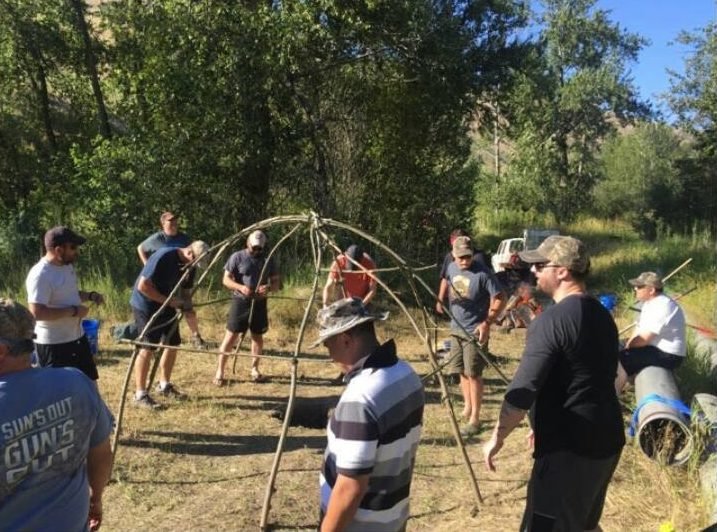
The veterans build the lodge themselves using willows and blankets, then sit inside while smoke rises from orange-hot stones in the middle of the circle. “The whole time, you tell people you can laugh, scream, cry, holler, whatever you want to do in here,” Vielle said. “The facilitator takes on all this crap that’s coming out of everybody.”
The therapeutic effects become clear almost instantly. “When they come out, the look that they have on their face is of elation, that ‘I don’t know what the hell just happened in there, but something just happened’ look,” Vielle described.
Richard Schults, community service director for VCR, confirms Vielle’s description. “I’m not a hippie-dippie kind of guy, so I was real hesitant, like, ‘What are we doing? I dunno about all of this stuff,’” Schults said. “When I got in there and we were doing the ceremony, it was pretty powerful — like nothing I’d experienced before.”
“They’re expected to come back and just jump right back into life, and it doesn’t happen. From what they’ve seen and what they did and what they lived through, it’s just hard to shut that off.”
Schults finds the sweats incredibly valuable. “You can just see, not only in myself but the other people you sweat with, just change from before you go into the lodge and then after you’re done with the sweat,” Schuts said. “It’s almost like a weight lifted off you. I can’t explain it, but it’s pretty incredible.”
“I get blessed in so many ways with being able to help these young men who have gone through some real trauma,” said Vielle. “They’re expected to come back and just jump right back into life, and it doesn’t happen. From what they’ve seen and what they did and what they lived through, it’s just hard to shut that off.”
And the relationships that form at these retreats are strong, according to Vielle. “From the first day they got there, a lot of them don’t even know each other. But by the first night, when they come out of that evening with the first fire circle, they’re laughing and kidding and joking with each other, just being buddies. They form lasting relationships. They get together afterward and go fishing or hunting and do things together. It’s not a one-time thing.”
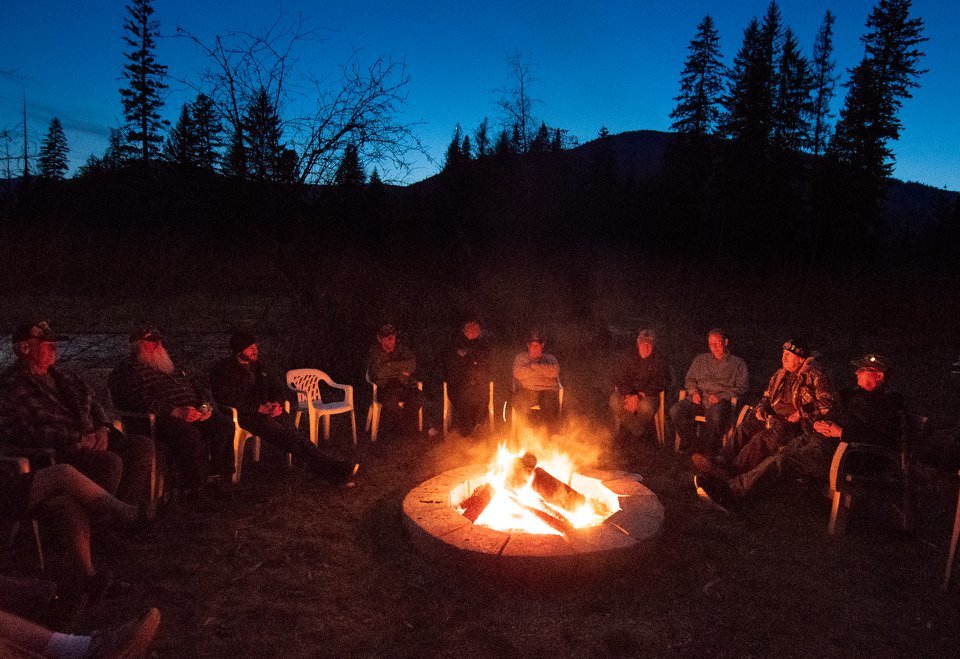
Many of the veterans who attend these retreats also participate in VCR’s other projects, answering the call throughout the area to help rebuild after wildfires and participate in an ongoing fuel-reduction program funded by the Department of Natural Resources. “The little trees around the big trees catch the big trees on fire, and then you have real big problems,” Darrell Loeffler, VCR’s community response director, explained.
After being medically retired following the Battle of Fallujah, the former machine gunner felt adrift. “I was just floating, having problems with opioid addiction due to my injuries,” Loeffler said. “I didn’t really have any sense of what to do with my life.” But the idea of getting out into nature strongly appealed to him. “I had this sense that I needed to keep physically active as much as I could because it was gonna help people one day, and I really needed to find out where I could use those skills.”
VCR was a perfect fit. “You’re going out into the community, usually into the sticks, with a group of veterans, not all of them combat vets but most of them combat vets, and you’re basically helping to maintain forest health,” Loeffler said. It reminded him of his past experiences: “In the same line as military service, you’re doing the dull, the dangerous, and the dirty work.”
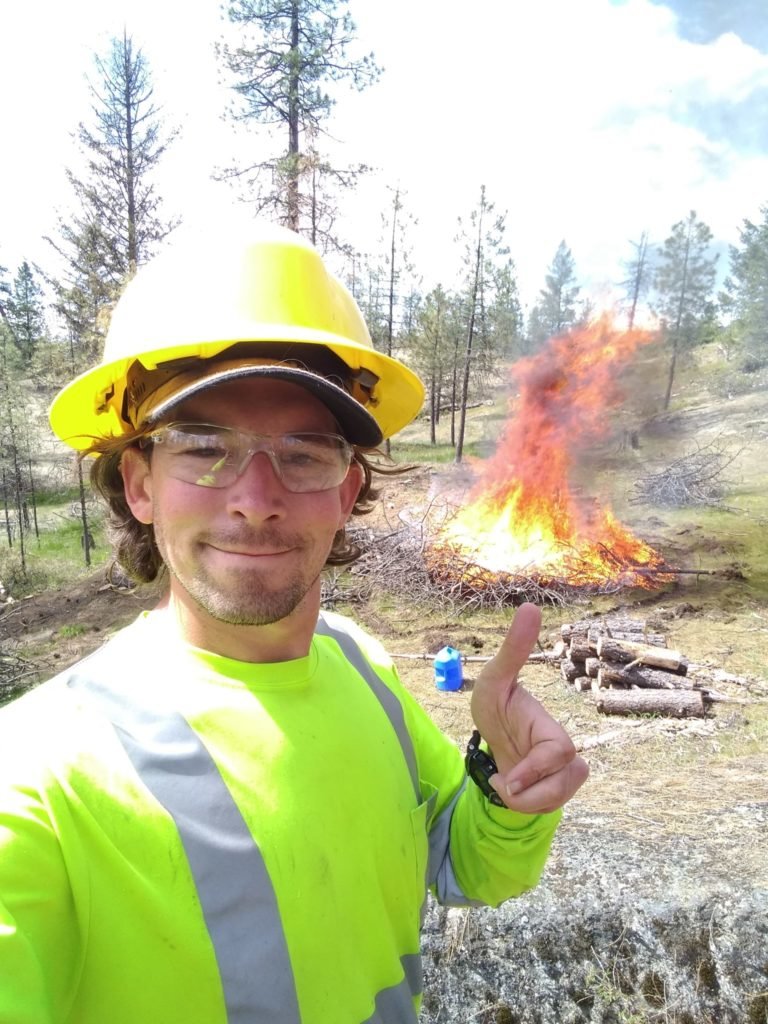
Loeffler is acutely aware of the isolation that can afflict many veterans after they leave the military. “I’ve heard it compared to when people get taken out of tribes where they’re in very separated areas, and then you integrate them into normal society,” he said. “It’s just a huge loss of that cultural understanding that you have when you’re in that military mindset and that military background.”
But having a place to focus his energy has turned things around. Loeffler also appreciates the sense of purpose it brings compared to many civilian jobs that seem less impactful in the community and the world than military service.
“We see a lot of folks come up, and when they first got involved in VCR, they were very unsure,” said Mike Patterson. “There’s a lot of that post-combat anxiety, and they’re not sure how to interact with other people. You see them two years later, and they’re leading work crews to go out on these jobs. It’s pretty awesome to see folks grow. We all want that mission focus we used to have in the military.”
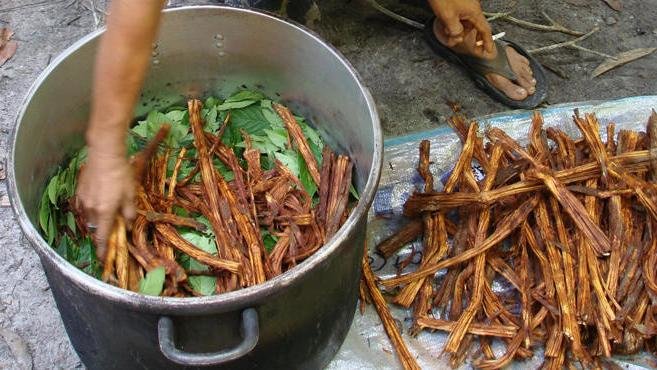
Ten minutes after drinking the ayahuasca with the other veterans from Heroic Hearts Project, Logan Stark began to feel nauseous. To prepare for this trip, Stark had followed a very strict diet and abstained from alcohol for over a month. This “cleanse” helped ensure that his body was ready to accept the medicine, but it wasn’t a guarantee that he wouldn’t have an adverse reaction.
As the brew settled in his gut, he knew that if he lay down too soon, he might vomit. He started to feel a tingling in his hands that slowly worked its way through his entire body, making him feel heavy. All his senses were in tune. He couldn’t wait to lie down any longer.
As he closed his eyes, Stark began to see a series of geometric shapes across an inky blackness, with the whole spectrum of the rainbow contained within each shape’s outline. The shapes morphed and multiplied, becoming infinite within his field of vision. It became impossible to comprehend time. Fifteen minutes could have been an hour. An hour could have been five minutes.
A two-dimensional image of a ceremonial bird-man appeared in front of him. He suddenly felt as though he was sitting high in a tree and the bird-man was cutting him open from his throat to his chest. He felt no pain or fear, only stillness and calm. The bird-man reached up and pulled out a glowing crystal, placing it into Stark’s body. Then the bird-man manifested a million tiny hands and began to stitch him up.
Part of the intention Stark had set for himself before taking the ayahuasca was to think about the friends he had lost during his military service. If he could hear their voices now, what would they say?
He was whisked into another series of visions, each more intense than the last. He felt like he was in a scene from “Alice in Wonderland,” being pulled deeper and deeper into the earth. He was inside a piece of M.C. Escher’s artwork. The visions were realistic, they were digital, they were painting-like. It felt like being trapped in a racecar.
During one of his visions, Stark felt as if he was surfing the galaxy, and then suddenly he stopped. An enormous peanut butter and jelly sandwich floated in front of him, and he heard a voice. The voice told him that the top slice of bread was birth, the bottom slice was death, and everything in between was this parallel dimension he now found himself in. He couldn’t believe his brain was capable of anything like this.
Each night was different, none quite so visually intense as the first. The second night Stark saw two bugs standing over him, performing surgery on him, and he accepted that the medicine was having physical effects on him as well as mental. He simply laid back and relaxed, thinking about life as the bugs worked away.
Part of the intention Stark had set for himself before taking the ayahuasca was to think about the friends he had lost during his military service. If he could hear their voices now, what would they say? But the overall intention was even broader than that. If his subconscious was a house, there were definitely rooms that were messy, dirty, and unorganized, causing larger problems in his life. This was an opportunity for him to open up to anything that might be an improvement.
The benefit of outdoor programs seem to be multifold: camaraderie, physical activity, a sense of purpose, and inner peace. GallantFew, another veteran service organization that hosts outdoor activities, utilizes a checklist with similar criteria to help orient vets on their path toward reintegration into civilian life.
“We start off with what we call an azimuth check survey,” said Karl Monger, the founder of GallantFew and a former U.S. Army Ranger. “It’s a gauge of fitness in five life areas.” Referred to as the Points of the GallantFew Star, they’ve recently been adopted by the 75th Ranger Regiment as The Big Five: emotional fitness, social fitness, professional fitness, spiritual fitness, and physical fitness.
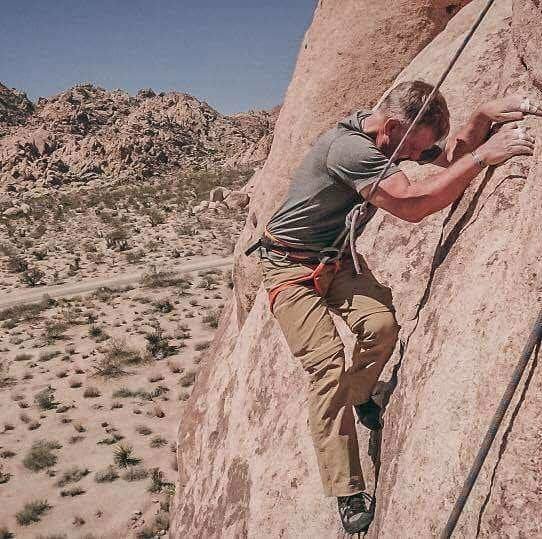
“We call it an azimuth check because if you imagine a plane that’s flying on a particular azimuth across the country, if they’re off azimuth by two degrees, by the time they get from one coast to the other, they’re 500 miles off course,” Monger said. “It doesn’t take a lot for you to be way off. But the longer that you’re way off, the worse it is. The earlier you can correct that azimuth, the better.”
While GallantFew is primarily interested in providing mentorship for returning military veterans, they also plan outdoor excursions to help address those fitness points. Every February, they sponsor a fitness-oriented fundraiser called Run Ranger Run, and they also offer rock climbing trips — they have done five so far, including two to Joshua Tree National Park in California. Veterans train together at a gym before heading out on the trips, and the bonding experience is strong. “It’s like they’re back in the unit again,” said Monger.
“It really struck me here about two months ago. We had a veteran that came, it was one of the first times they had come to climb with us — and the first time anybody tries to do rock climbing, they suck at it,” Monger stated bluntly. “But this veteran came and got on the wall and made their way up, and as they were struggling to climb, there are eight or nine other veterans that are all cheering for this veteran. I’m looking at this and thinking, ‘That veteran has been out of the military for a half-dozen years. When’s the last time anybody cheered for them?’”
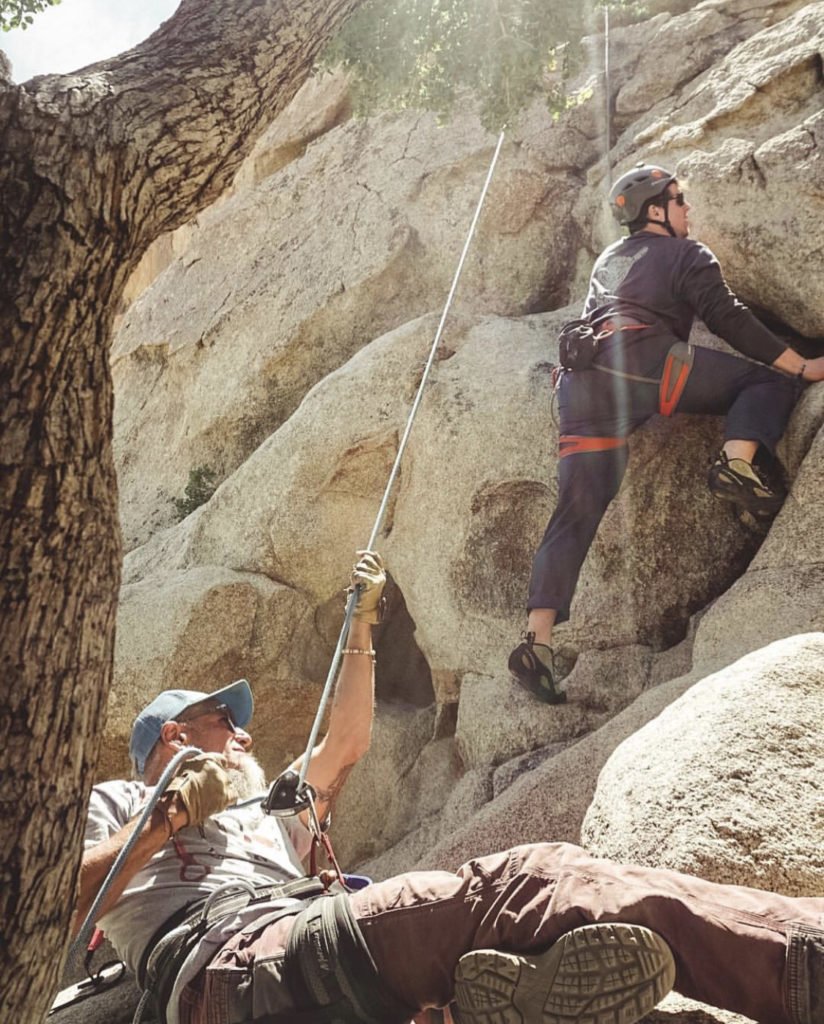
While Monger acknowledges and is a proponent of the benefits veterans receive from physical activities and outdoor programs, he has concerns about how some of them are run.
“You’ll have a weekend where someone is taken out and given a new shotgun or hunting clothes — I saw one where they were completely outfitted for fishing — but when they go back home, they have no support network to be able to accommodate this gift they’ve been given,” he said. “Or now they’ve had this mountaintop experience, but they go right back into the hell their life was before. They haven’t been given the tools or the connections to work their way out of it.
“I don’t want to give the impression that if somebody does that it’s all bad,” he continued. “But I really do reinforce the fact that if somebody out there is doing an outdoor program like that, have a way to follow up to help sustain that veteran after they leave whatever wonderful experience it is that they’re given.”
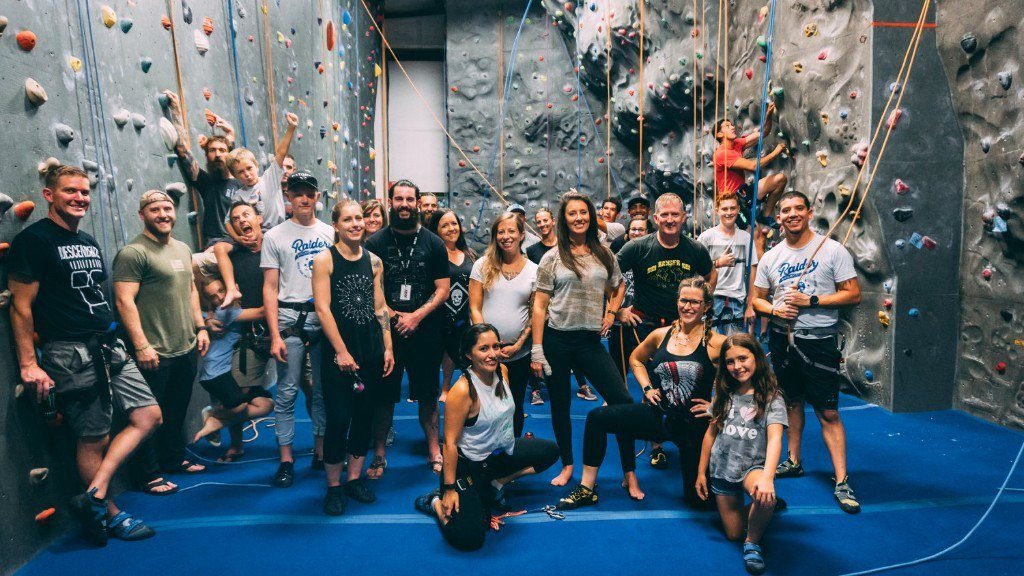
Counselor Annette Hill thinks outdoor programs are a key way to get veterans back in touch with their physicality, to ground their bodies and help deal with their lasting trauma.
“You have to calm the body down before you can get the brain to be willing to do other things,” Hill explained. “Trauma, grief, addiction: it’s a whole system experience. It’s the brain and it’s the body. We sometimes focus so much on the brain that we forget that the poor body is so lit up. You’re hearing so much more about meditation and yoga and these activities that we’re talking about, helping the person to connect to all of it.”
Hill takes a holistic approach to PTSD and other afflictions veterans deal with upon reintegrating into civilian life. “Post-traumatic stress disorder, moral injury, grief, a loss of identity, marital issues, family issues, substance use disorder — these kinds of things are very hijacking of the person’s physiology and mental capacity,” she explained.
“Once you connect over an activity like this, even ending up sitting around the campfire, you’re amongst a group of people who can validate your experiences.”
“Activities like these can help the person reconnect to their body. When you have post-traumatic stress disorder and you’re in the middle of profound grief, loss of identity, and addiction, your body does not belong to you anymore.”
Finding a way to be part of a group with people who share your experiences plays into that reconnection. “These kinds of programs can recenter a person, help them feel a sense of validation,” Hill said. “Once you connect over an activity like this, even ending up sitting around the campfire, you’re amongst a group of people who can validate your experiences. They’re willing to listen to the kinds of experiences you’re wanting to talk about.”
Hill’s son, an Army veteran, suffered from PTSD and ultimately succumbed to its grips, which gives her a personal perspective in regard to her practice. “As the mother of a veteran who died from PTSD, people of this mindset, because of how you are trained — the ‘army of one’ — it’s like, ‘Yeah, I’ve got this, I can do this,’” she said. “And the stigma of admitting that you have that and your peers don’t appear to be struggling in the same way makes it 50 times worse.”
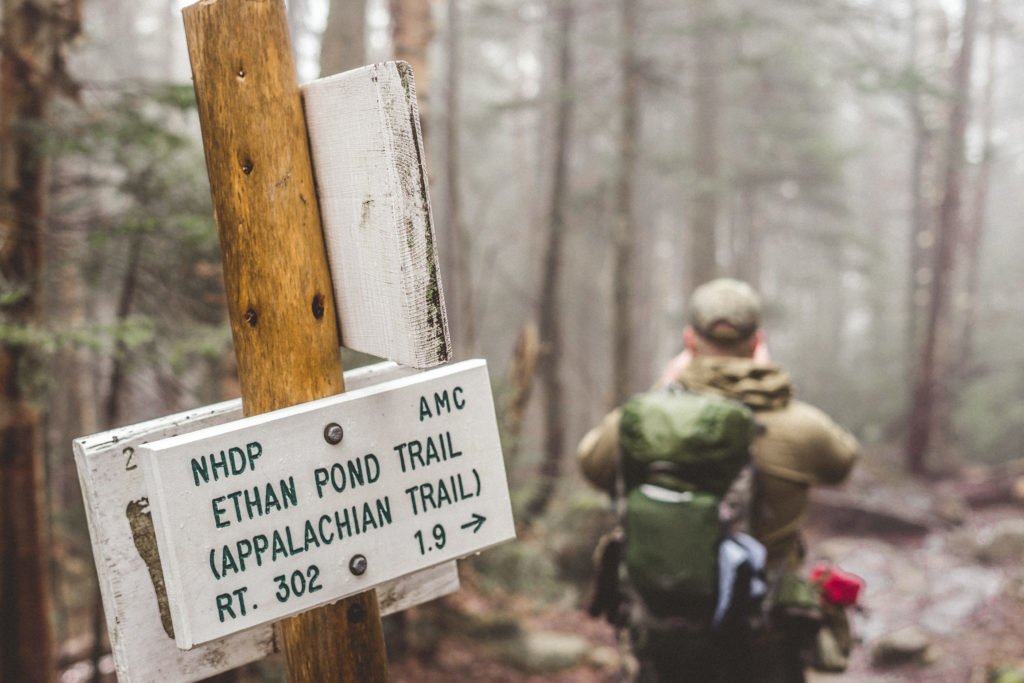
Creating an identity for oneself after military service is often frustrating. “You have all these intense experiences, you get out at whatever age, and now you’re set on the curb like, ‘All right, thank you for your service, go be independent. Get married, raise kids, pay bills, get a job, be whatever you want,’” said Hill. “It’s so disorienting. And you’re alone. So it’s this perfect cocktail of, clinically speaking, ‘What the fuck?’”
But Hill thinks that veterans have a specific skill set that can actually serve them well when it comes to using outdoors programs as a way to help deal with PTSD and other issues. “That’s what boot and AIT are all about: I want you to overcome your horrible anxiety about running into this building with live bullets and jumping out of this airplane. They’re such a great population to work with because they’re already way more than halfway there. We’ve just got to tap back into that system.”
As these organizations proliferate across the country, the likelihood of veterans finding something close to home that fits their needs is continually increasing. VSOs that offer outdoor programs present a unique and increasingly popular approach to the needs of veterans: a focus on physicality, spirituality, and a reconnection with group identity.
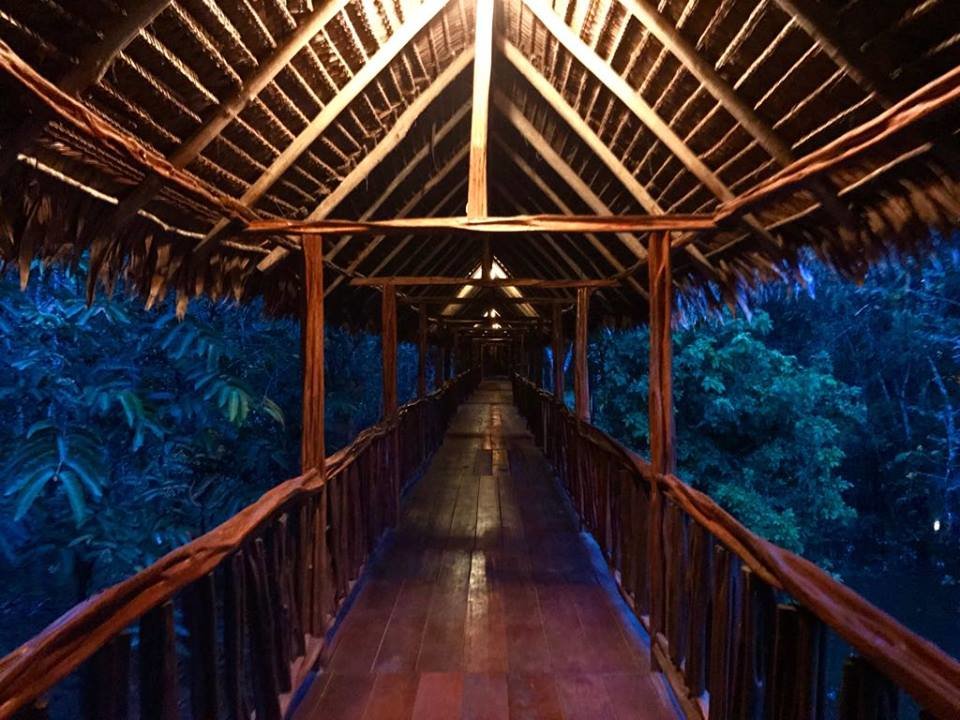
Every morning, Stark woke up to eat breakfast with his fellow veterans; he had come to know them well.
It was easy to be thrown out of the vision-state momentarily by the deep reverberations of another participant’s physical activity, anything from loud verbalizing to banging their head against a wall. But at breakfast, they shared. They communicated what the medicine had been showing them, teaching them. They connected in a way that most people never can, and certainly in a way none of them had experienced since their days in the military.
Stark wasn’t sure whether that was something they could have accomplished without the help of the ayahuasca. It brought them to terms with things they had hidden away in the dusty rooms of their brains. But whatever it was, it had bonded them closely. He cared about them all and wanted them to improve.
After returning home, Stark received a text message from the doctor in the group, thanking him for just being himself. It was nothing like the other messages he got from day to day, simply a random loving thought thrown out into the world. He had reconnected with the earth, with new friends, and with himself. He had found what he was looking for. Maybe others could, too?
Editor’s note: This article has been updated to clarify the job titles of members of Veterans Community Response.
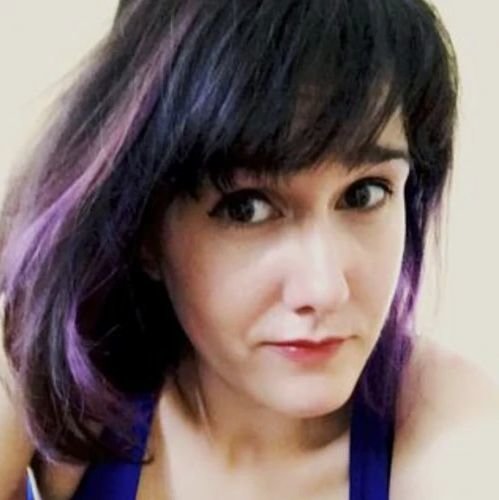
Maggie BenZvi is a contributing editor for Coffee or Die. She holds a bachelor’s degree in political science from the University of Chicago and a master’s degree in human rights from Columbia University, and has worked for the ACLU as well as the International Rescue Committee. She has also completed a summer journalism program at Northwestern University’s Medill School of Journalism. In addition to her work at Coffee or Die, she’s a stay-at-home mom and, notably, does not drink coffee. Got a tip? Get in touch!
BRCC and Bad Moon Print Press team up for an exclusive, limited-edition T-shirt design!
BRCC partners with Team Room Design for an exclusive T-shirt release!
Thirty Seconds Out has partnered with BRCC for an exclusive shirt design invoking the God of Winter.
Lucas O'Hara of Grizzly Forge has teamed up with BRCC for a badass, exclusive Shirt Club T-shirt design featuring his most popular knife and tiomahawk.
Coffee or Die sits down with one of the graphic designers behind Black Rifle Coffee's signature look and vibe.
Biden will award the Medal of Honor to a Vietnam War Army helicopter pilot who risked his life to save a reconnaissance team from almost certain death.
Ever wonder how much Jack Mandaville would f*ck sh*t up if he went back in time? The American Revolution didn't even see him coming.
A nearly 200-year-old West Point time capsule that at first appeared to yield little more than dust contains hidden treasure, the US Military Academy said.












